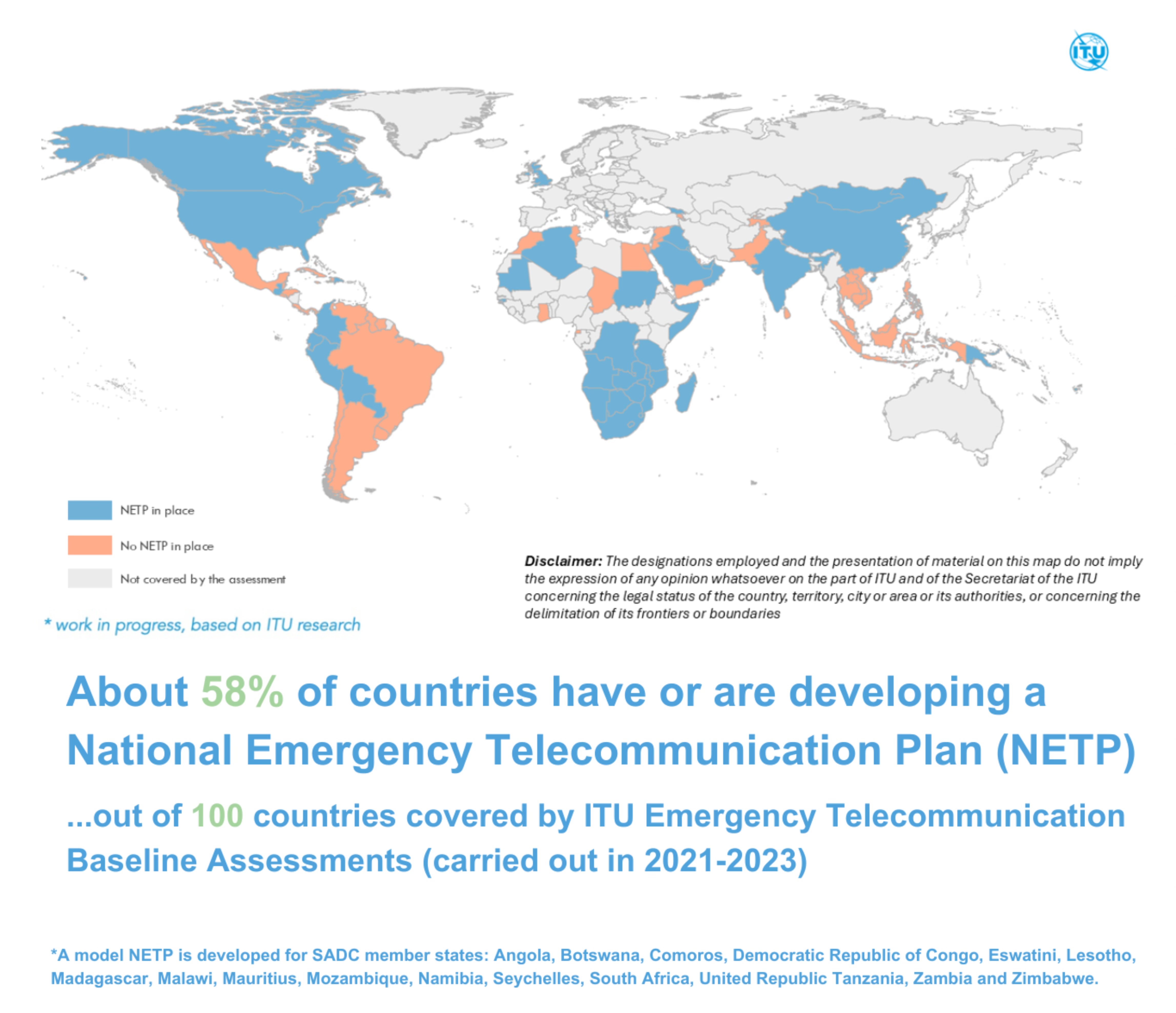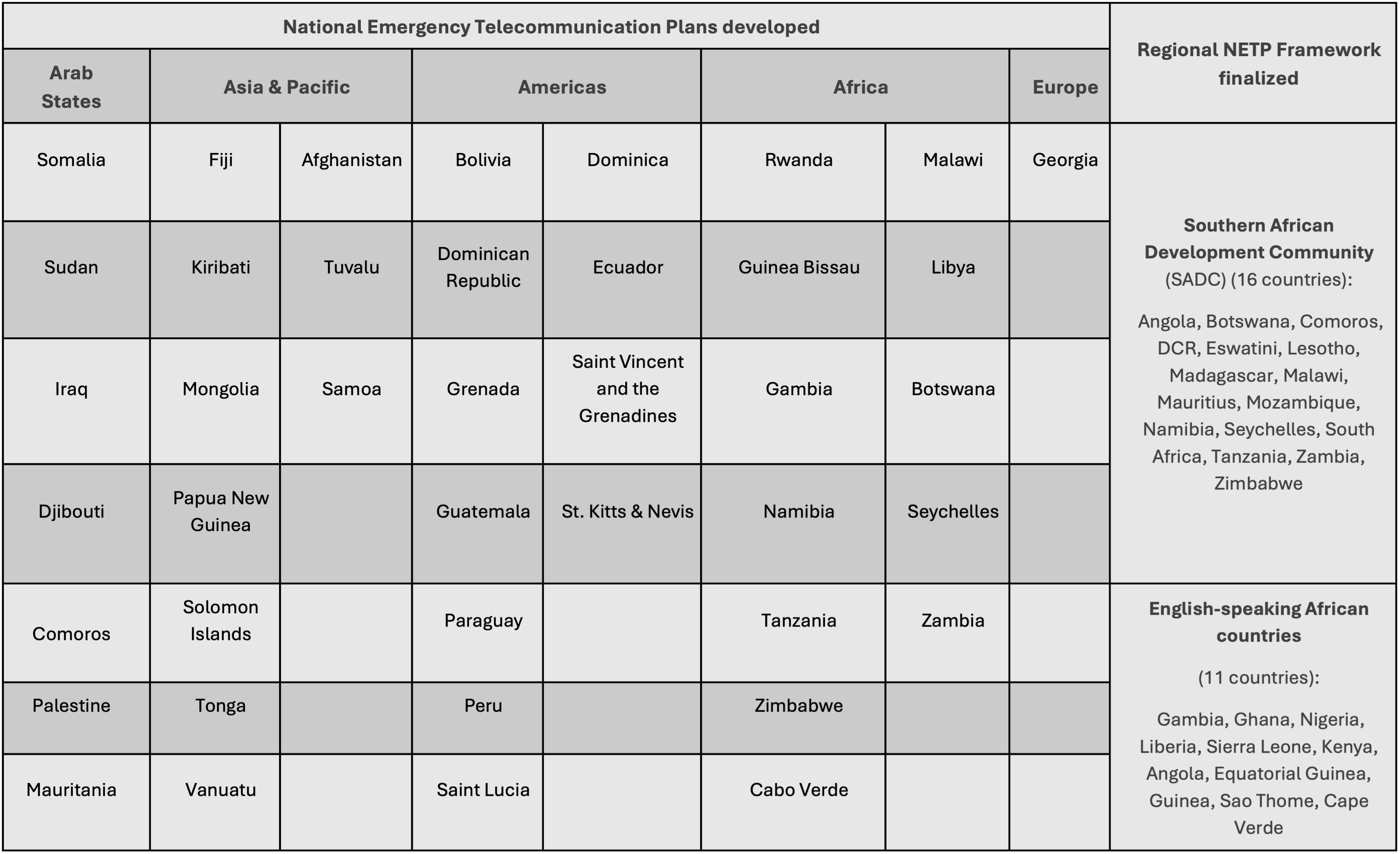Information and Communication Technologies (ICT) are one of the major pillars for disaster management and risk reduction. They are essential to monitor the underlying hazards and to deliver vital information to all stakeholders, including the most vulnerable societies at risk. The flow of vital information in a timely manner before, during and after disasters is critical for decision-making processes, as well as for rapid response during emergencies.
What is a National Emergency Telecommunication Plan?
A National Emergency Telecommunication Plan (NETP) is an overall document that includes not only the regulatory framework for disaster risk management, but also all activities and actions that need to be developed and implemented in each of the phases of the disaster management cycle beyond the ICT sector. This includes the depiction of maps showing the location and types of hazards the country faces; understanding of the telecommunication/ICT landscape, operators and service providers, facilities availability and service penetration; the development of standard operating procedures and response and contingency plans; and the consideration of the treaties and international cooperation agreements signed by the country.
An NETP promotes coordination across all levels of government, engaging stakeholders to think through the life cycle of a potential disaster, or any emergency, determining the required capacities and capabilities for emergency responses, and establishing a governance framework of roles and responsibilities through a multi-stakeholder approach.
The NETP also clarifies how to shape planning, to envision and share desired outcomes, and it outlines effective ways to achieve and communicate expected results. These procedures allow information sharing across all levels of government, within communities, and between public and private organizations to become more resilient to disasters.
-
Why are NETPs needed?
Frequently, the lack of communications and coordination during the disaster management cycle often leads to failure in the response phase. The speed and effectiveness of emergency response depends on the availability of communications to enable the exchange of information between different actors in real time or as fast as feasible.
Many countries lack national strategies and coordination mechanisms that not only promote harmonization across all levels of government, private sector and humanitarian actors, but also engage all stakeholders to work together through a multi-stakeholder approach.
In order to avoid any delays in providing a fast response during any disaster or emergency, countries need to develop and implement national plans and strategies, such as Emergency Telecommunication Plans, that allow the best use of ICTs for increasing resilience and delivering a fast response in a coordinated manner when disasters strike.
How many countries have an NETP?
The map shows an ITU assessment of 100 countries (covering mainly the Americas, Arab States and the Pacific Islands) which highlights that about 58% of these countries have or are developing an NETP.
ITU's Strategic Target 3.5 stipulates that 'By 2023, all countries should have an as part of their national and local disaster risk reduction strategies." In line with this objective, ITU has supported the development of NETPs for 41 countries. Additionally, two regional NETP frameworks have been developed: one for the
Southern African Development Community (SADC), covering 16 countries, and another for English-speaking African countries, including 11 countries. At present, ITU continues to provide support and is actively preparing additional NETPs as requested by more countries.

ITU has developed 41 NETPs: Out of the 41, 11 are in LDCs, 10 in SIDS, and 11 are in LLDCs. See the list of countries here.